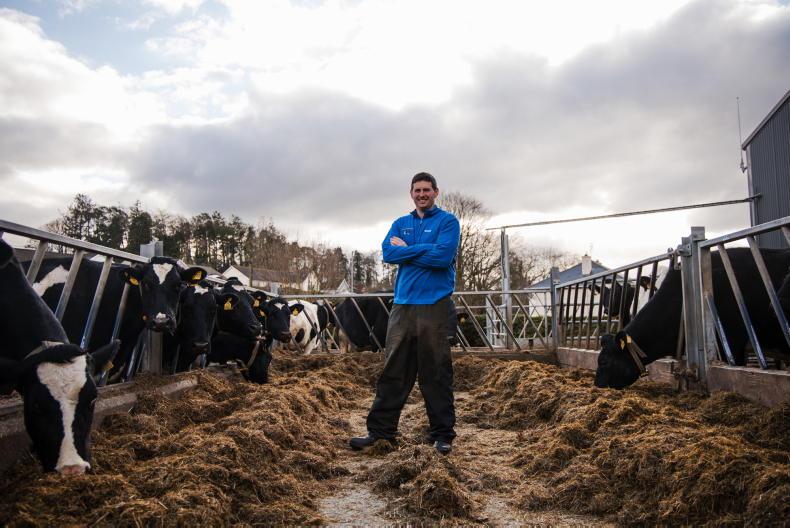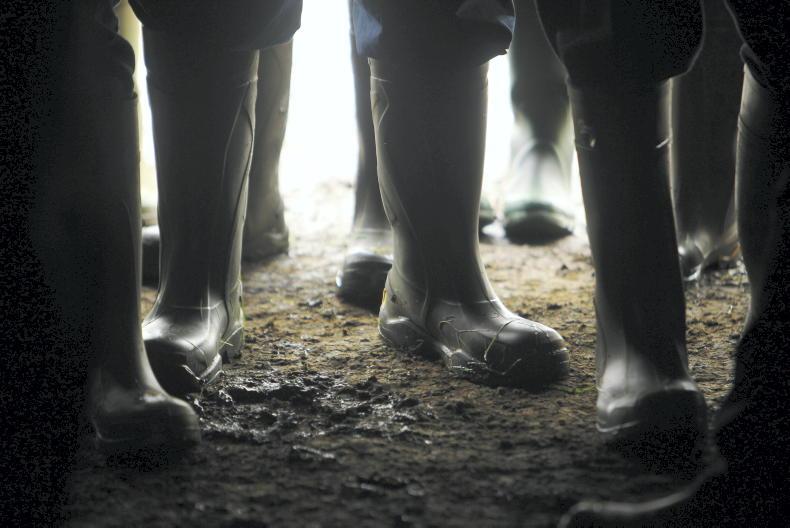The 2024 State of Food Security and Nutrition in the world reveals that between 713m and 757m people in the world were exposed to the prevalence of undernourishment (PoU), the term given by the report to global hunger, in 2023. PoU is defined by the United Nations (UN) as “the condition by which a person has access, on a regular basis, to the amount of food that is insufficient to provide the energy required for conducting a normal, healthy and active life, given his or her own dietary energy requirements.”
Using the mid point number of 733m people, this is an increase of 152m people compared with 2019 and it means that one in eleven people or 9.1% of the global population were exposed to hunger last year. The report which is produced annually by the Food and Agriculture Organisation (FAO) of the UN highlights that there was a significant increase in 2020 and a lesser increase in 2021 and the percentage of the world’s population exposed to PoU has remained around 9% since.
Member countries of the United Nations agreed in 2015 an Agenda for sustainable development to be delivered by 2030. This is based on 17 sustainable development goals (SDG), the first of which is to have no poverty and the second is to have zero hunger which is what this report is focused on.
Development goals
As Figure 1 shows, between 2005 and 2015 steady progress was being made on the elimination of hunger but between that and 2019 progress had stagnated, and was reversed in 2020 and 2021 before settling at the new higher level for the past three years. Latest projections show that not only will zero hunger not be achieved by 2030, 582m people will still be undernourished.
Unsurprisingly, hunger isn’t an issue in the wealthy populations of the developed world and global averages mask a greater problem in the world’s poorer regions.
Over 20% of the population or up to 298.4m people on the African continent may have faced hunger in 2023 according to the report.
Food security risk
However, averages can be misleading as illustrated by the fact that overall Asia has a relatively low 8.1% of its population exposed to hunger but because of the size of population, this represents 384.5m people, half the global total.
The report also considers other levels of food security risk that haven’t reached the level of hunger.
It finds that up to 2.3bn people or almost 29% of the global population are exposed to moderate or severe food insecurity which means they couldn’t be certain to access adequate food supplies.
Part of the difficulty with food security is the sharp increase in food prices following the global pandemic in 2020 and the Russian invasion of Ukraine in 2022.
Higher energy and fertiliser costs drove up the cost of production and war disrupted grain production and trade in Ukraine, one of the world’s major grain exporters. Higher food costs have triggered what has been described as a cost-of-living crisis in the developed world where consumer lifestyles were negatively impacted by having less disposable income.
No easy solutions
This has forced many people to access food banks but the impact is much greater for the world’s poorer regions where spending on food represents a large chunk of whatever disposable income they have. Higher food prices for these people risks making food unaffordable.
The report quantifies the problem and the UN have several reports on the need for sustainable development of food production and increased productivity in the poorest countries where the greatest food security risk exists. It points out that food security and nutrition take less than a quarter of total official development assistance and other official flows.
Between 2017 and 2021, these flows amounted to $76bn (€70bn) per year with just over one third of it targeted to address the major drivers of food insecurity and malnutrition. As well as the report identifying the need for more money, there is also a recognition that more effective use of existing resources will help reduce the financing gap.
It was a very different world back in 2015 when the SDGs were agreed by the members of the United Nations. The ambition to end global poverty and hunger, numbers one and two in the list, secured unanimous approval. Since then, there has been a global pandemic and a rise in political instability. The has worsened since Russia’s 2014 invasion of Crimea and eastern Ukraine and its full invasion in 2022. More recently there has been conflict in the Middle East which threatens to escalate. This has meant a greater focus by governments on defence spending than on foreign aid with the most vulnerable people in the world most impacted. The Irish Government continues to do its share in this area through Irish Aid who have been operating for the past 50 years.

Global conflict such as Russia invading Ukraine caused a supply shock to global grain trade in 2022, driving prices higher
The issue of global food security does however create a dilemma for the Irish Government as they attempt to reconcile environment and climate policy with enabling Irish farmers maximise their capability to produce food.
Ireland is fortunate to have a climate that enables more food to be produced than is required for the population and the surplus is available for trade.
It cannot be a case of either climate or production having absolute priority but rather a blend of farmers and processors minimising emissions per unit of production but also accepting that emissions will be disproportionately higher from agriculture in Ireland because we grow grass that is converted to food by ruminant livestock.
FAO UN 2024 report identifies progress on elimination of global hunger.Identifies up to 757m people exposed to undernourishment in 2023.Up to 2.3bn exposed to moderate or severe food insecurity.Target of elimination by 2030 unlikely to be met.Problem made worse by global pandemic and conflict.More money required as well as better use of existing resources.
The 2024 State of Food Security and Nutrition in the world reveals that between 713m and 757m people in the world were exposed to the prevalence of undernourishment (PoU), the term given by the report to global hunger, in 2023. PoU is defined by the United Nations (UN) as “the condition by which a person has access, on a regular basis, to the amount of food that is insufficient to provide the energy required for conducting a normal, healthy and active life, given his or her own dietary energy requirements.”
Using the mid point number of 733m people, this is an increase of 152m people compared with 2019 and it means that one in eleven people or 9.1% of the global population were exposed to hunger last year. The report which is produced annually by the Food and Agriculture Organisation (FAO) of the UN highlights that there was a significant increase in 2020 and a lesser increase in 2021 and the percentage of the world’s population exposed to PoU has remained around 9% since.
Member countries of the United Nations agreed in 2015 an Agenda for sustainable development to be delivered by 2030. This is based on 17 sustainable development goals (SDG), the first of which is to have no poverty and the second is to have zero hunger which is what this report is focused on.
Development goals
As Figure 1 shows, between 2005 and 2015 steady progress was being made on the elimination of hunger but between that and 2019 progress had stagnated, and was reversed in 2020 and 2021 before settling at the new higher level for the past three years. Latest projections show that not only will zero hunger not be achieved by 2030, 582m people will still be undernourished.
Unsurprisingly, hunger isn’t an issue in the wealthy populations of the developed world and global averages mask a greater problem in the world’s poorer regions.
Over 20% of the population or up to 298.4m people on the African continent may have faced hunger in 2023 according to the report.
Food security risk
However, averages can be misleading as illustrated by the fact that overall Asia has a relatively low 8.1% of its population exposed to hunger but because of the size of population, this represents 384.5m people, half the global total.
The report also considers other levels of food security risk that haven’t reached the level of hunger.
It finds that up to 2.3bn people or almost 29% of the global population are exposed to moderate or severe food insecurity which means they couldn’t be certain to access adequate food supplies.
Part of the difficulty with food security is the sharp increase in food prices following the global pandemic in 2020 and the Russian invasion of Ukraine in 2022.
Higher energy and fertiliser costs drove up the cost of production and war disrupted grain production and trade in Ukraine, one of the world’s major grain exporters. Higher food costs have triggered what has been described as a cost-of-living crisis in the developed world where consumer lifestyles were negatively impacted by having less disposable income.
No easy solutions
This has forced many people to access food banks but the impact is much greater for the world’s poorer regions where spending on food represents a large chunk of whatever disposable income they have. Higher food prices for these people risks making food unaffordable.
The report quantifies the problem and the UN have several reports on the need for sustainable development of food production and increased productivity in the poorest countries where the greatest food security risk exists. It points out that food security and nutrition take less than a quarter of total official development assistance and other official flows.
Between 2017 and 2021, these flows amounted to $76bn (€70bn) per year with just over one third of it targeted to address the major drivers of food insecurity and malnutrition. As well as the report identifying the need for more money, there is also a recognition that more effective use of existing resources will help reduce the financing gap.
It was a very different world back in 2015 when the SDGs were agreed by the members of the United Nations. The ambition to end global poverty and hunger, numbers one and two in the list, secured unanimous approval. Since then, there has been a global pandemic and a rise in political instability. The has worsened since Russia’s 2014 invasion of Crimea and eastern Ukraine and its full invasion in 2022. More recently there has been conflict in the Middle East which threatens to escalate. This has meant a greater focus by governments on defence spending than on foreign aid with the most vulnerable people in the world most impacted. The Irish Government continues to do its share in this area through Irish Aid who have been operating for the past 50 years.

Global conflict such as Russia invading Ukraine caused a supply shock to global grain trade in 2022, driving prices higher
The issue of global food security does however create a dilemma for the Irish Government as they attempt to reconcile environment and climate policy with enabling Irish farmers maximise their capability to produce food.
Ireland is fortunate to have a climate that enables more food to be produced than is required for the population and the surplus is available for trade.
It cannot be a case of either climate or production having absolute priority but rather a blend of farmers and processors minimising emissions per unit of production but also accepting that emissions will be disproportionately higher from agriculture in Ireland because we grow grass that is converted to food by ruminant livestock.
FAO UN 2024 report identifies progress on elimination of global hunger.Identifies up to 757m people exposed to undernourishment in 2023.Up to 2.3bn exposed to moderate or severe food insecurity.Target of elimination by 2030 unlikely to be met.Problem made worse by global pandemic and conflict.More money required as well as better use of existing resources. 











SHARING OPTIONS